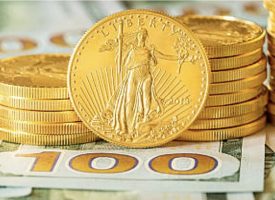If this unfolds, it will be create shockwaves in a hurry.
February 28 (King World News) – Here is a portion of today’s note from legend Art Cashin: More Musing From The Maven – Over recent years, one of the more popular features of Cashin’s Comments has been the occasional inclusion of observations on the bond market by my good friend, the mortgage maven, Barry Habib. In fact, readers often ask – “Have you had an update from Barry?” Today, I’m happy to say, the answer is – yes! Here’s a bit:
We are going to see 3.04% on the 10-year within the next couple of weeks. That will be the moment of truth. The level of 3.04% matches the top of the 30-year downtrend in yields, as well as the 0% retracement from the highs 4 years ago.
In other words…it’s a big deal if this is convincingly broken to the upside, and strongly suggests that the 10-year will hit 3.80% before summer. That’s a very big change from what we are used to and something that many are not ready for.
I think there is a very strong chance that 3.04% holds…at least for a while…and that rates will back off a bit after reaching this important ceiling. But it is only a matter of time until this is broken. There are too many negative factors weighing on bonds.
Of course we have some inflation fears, including the possibility of wage pressure, as well as a stronger economy. Then there are the negative technical signals – remember when we pointed out that if 2.635%, the next stop was 3.04% – the recent upward channel that yields are on is a strong one.
But the most important reason we will see higher yields is simple supply and demand. The US will need to borrow $400B more in 2018 then it did in 2017 through the sale of more Treasuries. At the same time, the Fed will curtail it’s reinvestment in Treasuries and Mortgage Bonds by an increasing and significant amount this year. They will buy $252B less this year in Treasuries, at the same time that $400B more supply will be issued. That’s about $650B that will need to be absorbed by the open market. And in a rising inflationary environment, the yield will have to be high enough to garner interest. And then there is the $168B less in Mortgage Bonds that the Fed will be buying, which just adds to the supply of bonds to be absorbed.
The Fed began their curtailment in reinvestment on Treasuries and MBS in October of 2017. Our Friend Peter Boockvar calls it Quantitative Tightening or QT. That’s when rates started to move a bit higher. The Fed ramped up QT in January, and bonds responded more negatively. The Fed will continue to ramp up QT through 2018 – and bonds will struggle.
What you’ve got to love is that Barry lays it out step by step with no fudging and obfuscating. It’s all spelled out.
Overnight And Overseas – Asian equity markets closed lower in apparent reaction to Tuesday’s Wall Street selloff. Tokyo closed down the equivalent of 375 points in the Dow. Hong Kong and Shanghai were off a bit less sharply. India closed moderately lower.
In Europe, stocks are all modestly lower. Among other assets, Bitcoin is lower, trading below $11,000. Gold is up fractionally but remains stuck in the longstanding resistance band. Crude is off slightly and the euro is a shade lower against the dollar. Yields are flat.
Consensus – Despite Powell’s rather upbeat outlook much of the recent economic data has been softer than estimated, causing many to scale back GDP estimates.
Next couple of days could be critical to the question of a possible retest of the lows.
Stick with the drill – stay wary, alert and very, very nimble.
ALSO RELEASED: Gold & Oil Hit As New Fed Chair Powell Testifies, But Here Is The Big Question CLICK HERE TO READ.
***KWN has released the extraordinary audio interview with Gerald Celente discussing the action in the gold, silver and major markets as well as what he is planning to do with his own money in the gold market and much more and you can listen to it by CLICKING HERE OR ON THE IMAGE BELOW.
© 2018 by King World News®. All Rights Reserved. This material may not be published, broadcast, rewritten, or redistributed. However, linking directly to the articles is permitted and encouraged.








